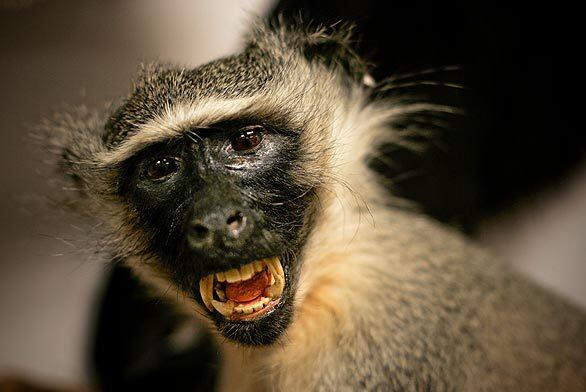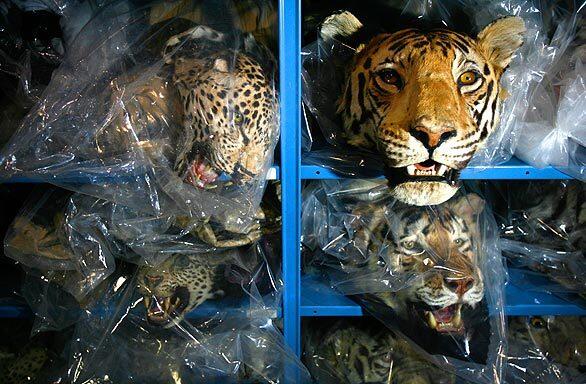
The heads of large cats sit on shelves in the warehouse outside of Denver. (Nathan W. Armes / For The Times)
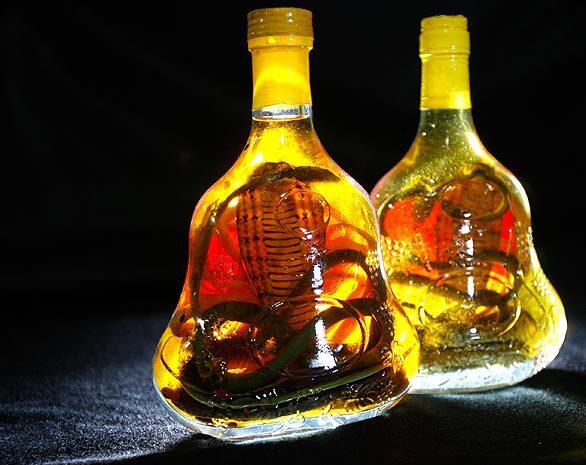
Snake wine from Vietnam features a coiled snake fighting another snake inside a curvy bottle. The conquering snake has been altered to look like a deadly and venomous cobra, but according to the U.S. Fish and Wildlife Service, it appears to be a water or rat snake. (Nathan W. Armes / For The Times)
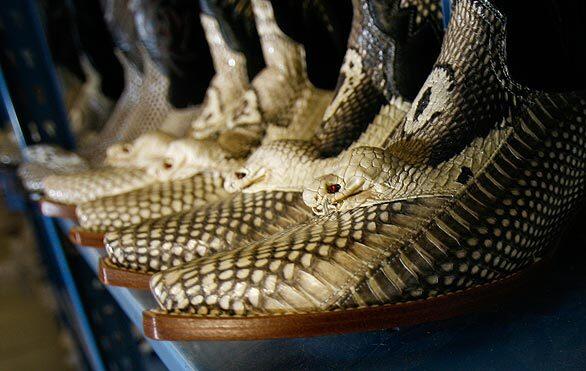
Snakeskin boots line the repository shelves. The cobra heads remain attached, with the eyes inlayed with small red stones. (Nathan W. Armes / For The Times)
Advertisement

Elephant ivory pieces from Africa, where ivory is heavily traded in violation of international laws. (Nathan W. Armes / For The Times)
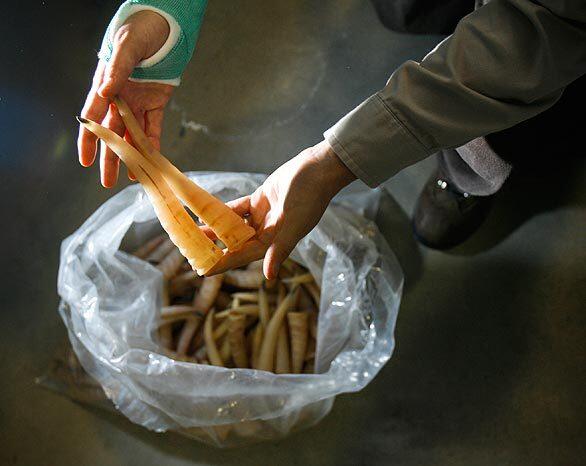
U.S. Fish and Wildlife Service specialist Doni Sprague holds Saiga antelope horns. Her job is to sort and document the items before wheeling them through the warehouse doors and into a dusty oblivion. (Nathan W. Armes / For The Times)
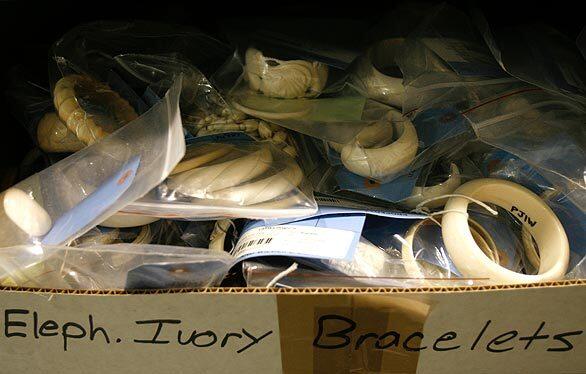
A pile of elephant ivory bracelets sits in a box. The illegal trade industry represented by the repository is worth an estimated $20 billion annually. (Nathan W. Armes / For The Times)
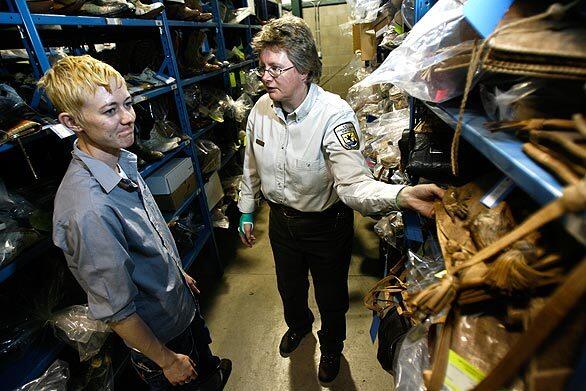
Specialist Doni Sprague, right, explains the cataloging system used to identify and track each piece of contraband to intern Jen Behrendt, a student at Metropolitan State University. (Nathan W. Armes / For The Times)
Advertisement

The head of a stuffed sea turtle sticks out among a pile of its kind. (Nathan W. Armes / For The Times)
